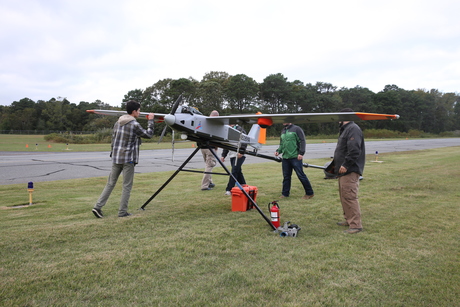Verizon tests airborne LTE

Flight trials of Verizon’s Airborne LTE Operations initiative have demonstrated the promise of drones for communications relay.
Verizon has announced its strategy to drive innovation and widespread adoption for in-flight wireless connectivity through its Airborne LTE Operations (ALO) initiative. Two years in the making, Verizon’s plan includes:
- The successful completion of technical trials in various locations across the USA using a combination of unmanned and manned aircraft on Verizon’s 4G LTE network.
- An early adopter simulation exercise in Cape May, New Jersey, using unmanned aircraft systems (UASs) to demonstrate how Verizon’s 4G LTE network can help first responders and emergency management personnel enhance disaster recovery efforts.
- The launch of a new suite of services as early as 2017 on Verizon’s ThingSpace IoT platform to help developers and businesses create and manage a wide range of ALO-enabled applications simply backed by secure cloud and analytics capabilities.
- A new device certification process, now available, that sets forth requirements to enable access to wireless connectivity for unmanned aerial vehicles (UAVs) and UASs on Verizon’s 4G LTE network.
- Collaboration with partners such as American Aerospace (AATI) and Sierra Wireless to pave the way for aerial long-range applications beyond line of sight.
Commercial connectivity trials
Verizon’s network team began work to develop the technology for in-flight LTE operations in 2014 and throughout 2015.
In 2016, Verizon evolved its Airborne LTE Operations even further by engaging AATI to test connectivity between aerial platforms and Verizon’s 4G LTE network. The initial controlled trial was conducted with a 5-metre-wingspan unmanned aircraft system. The aerial platform tested advanced aerial inspection techniques that can be applied not just to the hundreds of miles of pipeline in rural Virginia, but also nationwide while connecting to Verizon’s 4G LTE network.
“This latest trial demonstrated how emerging technology combined with wireless networks can improve safety and security,” said Mike Haberman, vice president, Network Operations, Verizon. “A nationwide reliable 4G LTE network is the foundation for the future of mobile IoT in the air.”

As a result of the successful trial, Verizon deemed its 4G LTE 700 MHz network safe for in-flight wireless connectivity, which led to the creation of device and service requirements as part of Verizon’s ALO initiative.
Together with AATI, Verizon is also exploring next steps in in-flight cellular services for UAVs nationally on its 4G LTE network. Once federal regulations allow UAV operation beyond visual line of sight (BVLOS), new tests will focus on BVLOS command-and-control cellular network communications for long-distance UAVs.
Path forward for certification
Once Verizon certifies that the device has met Verizon’s Open Development requirements for wireless connectivity and usage on Verizon’s LTE network, aerial devices may be used for multiple applications by embedding the device on the UAV itself, as an add-on device to the UAV or even in conjunction with a low-altitude flying manned aircraft — in accordance with the operators’ compliance with other applicable rules.

Devices certified by Verizon will be listed on the company’s Open Development portal.
“In our view, no-one else in the industry has taken the kind of holistic approach of extending the reach of 4G LTE and IoT like Verizon,” said Mike Lanman, senior vice president of Enterprise Products and IoT at Verizon.
“While other market participants are only just now getting into this space by launching trials within a limited geographical footprint, Verizon has taken a leadership role for the last two years.
“By scaling the systems required to connect UASs and UAVs to our LTE network nationwide through our ALO initiative, we’ve set the stage for a wide range of applicable solutions to be delivered via our ThingSpace open development platform across multiple sectors,” Lanman added.
RFUANZ report: setting the frequency for success in 2025
Last year brought a lot of internal change for RFUANZ, but the association has hit the ground...
ARCIA update: an extended event calendar for 2025
With the addition of Tasmanian events and a conference in Adelaide in September, 2025 will see...
ARCIA update: plans for 2025
ARCIA will be holding a mixture of workshop, conference and networking events in 2025, in the...





